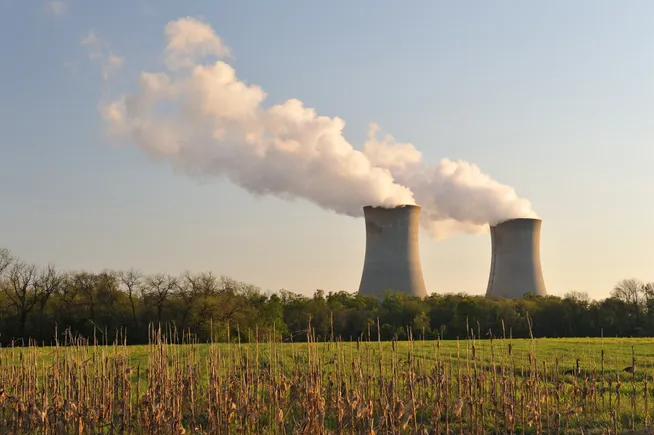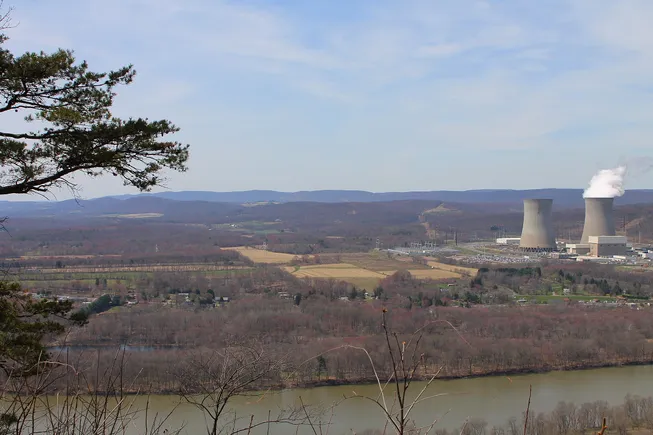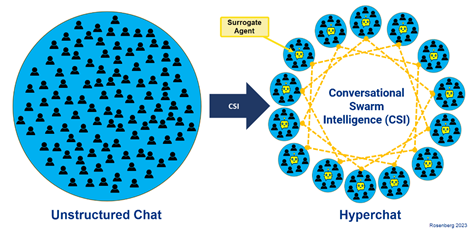
Leaders of land-constrained, population-dense East Coast states have high hopes for offshore wind as they look toward self-imposed carbon-neutral electricity deadlines as early as 2035.
But the Trump administration froze offshore wind leasing on Jan. 20, compounding the industry’s preexisting economic challenges, and the Environmental Protection Agency on March 14 revoked an air quality permit for the troubled 1.5-GW Atlantic Shores project off New Jersey. Though about 4.1 GW of capacity was under construction by last summer, according to the National Renewable Energy Laboratory, the new administration’s hostility raises questions about how much of the 80.5 GW “potential generating capacity” in the pipeline as of 2023 will actually get built.
Some Eastern states now appear to be looking for a Plan B, or at least a hedge, in nuclear power, experts told Utility Dive. Last month, several — including New York, Maryland and Virginia — joined the National Association of State Energy Officials’s Advanced Nuclear First Mover Initiative, or ANFMI, which the Clean Air Task Force says will “develop supportive policies, coordinate with private stakeholders, and work toward unique procurement and financing options for nuclear energy projects.” State-level initiatives are proliferating across the region as well, such as a New York nuclear “master plan” and a Maryland bill that could provide direct financial support to nuclear power projects.
“There’s been a lot of attention paid to what’s going on at the federal level, but it seems like a lot of the momentum going forward will be in the states,” said Zach Koshgarian, an analyst with the Nuclear Innovation Alliance.
Getting the first movers together
Formally announced in early February, ANFMI marks a significant step in interstate cooperation on new nuclear development. The 11-state consortium includes Democratic-controlled Eastern Seaboard states, like New York and Maryland; states with mixed political control, like Virginia and Pennsylvania; and several Republican-controlled states, including Wyoming, West Virginia and Louisiana.
“By aligning multiple states behind one or two standardized reactor designs, this initiative could solidify firm orderbooks and create a predictable pipeline of projects for the industry. Collaboration is critical to achieving economies of scale, driving down costs through ‘learning-by-doing,’ and reaching NOAK (nth-of-a-kind) cost reductions,” Clean Air Task Force Director of Nuclear Program Malwina Qvist said in a February statement.
In turn, ANFMI supports the Nuclear Scaling Initiative, a global collaboration between CATF and other nongovernmental organizations to deploy at least 50 GW of nuclear power annually by the 2030s and 1,000 GW total by 2050, Qvist told Utility Dive in an interview.
ANFMI is “very focused” on building a robust pipeline of “pooled procurements [for] a small number of technologies” to drive down deployment costs for all participants, Qvist said.
NASEO convened ANFMI after hearing from “one after another [state energy officials] who came to us and said, ‘We want to take the next step and get new reactors in place,’” said NASEO President David Terry. In addition to technology selection and orderbook development, officials saw opportunities to coordinate on site identification, early site permit applications and construction cadence to avoid bidding up project costs, he added.
Interstate coordination led by state elected officials, policymakers and regulators has the added benefit of sidestepping potential antitrust concerns around utility-led coordination, Qvist said.
At least two power producers with existing nuclear operations in the Eastern U.S. have shown interest in deploying new reactors. Constellation Energy said in January that, with support from the New York State Energy Research and Development Authority, it would apply for a federal grant to seek an early site permit “for one or more advanced nuclear reactors” at its 1,907-MW Nine Mile Point Clean Energy Center near Oswego, New York. Last year, Dominion Energy issued a request for proposals for a possible small modular reactor deployment at its 1,892-MW North Anna Power Station and subsequently announced a memorandum of understanding with Amazon to support the Virginia project.
Both states have taken steps in the past year to support nuclear development. New York issued a request for information from “entities either already pursuing, or interested in pursuing, a potential role in advanced nuclear energy technology development” and an interim “blueprint” for nuclear power deployment as it prepares to release a more comprehensive nuclear “master plan” next year. Virginia Gov. Glenn Youngkin, R, signed a law in July authorizing Dominion to recover development costs for “up to one small modular reactor facility” from ratepayers. Dominion’s most recent Virginia integrated resource plan envisions up to five SMR deployments totaling 1,340 MW by 2039.
The Dominion and Constellation efforts are examples of “public-private partnerships [that] are going to be really key for how new nuclear develops in the states,” Koshgarian said.
Meanwhile, lawmakers in Maryland — another ANFMI member — are considering a bill that would include nuclear power in a new zero-emissions credit program, creating an additional revenue stream for nuclear projects there.
The Virginia law and Maryland proposal show states’ growing willingness to provide direct financial support to the nuclear industry, said Timothy Fox, managing director of ClearView Energy Partners. ClearView is tracking nearly two dozen pro-nuclear state legislative proposals, the energy policy and markets consultancy said in a February note.
Pro-nuclear legislation — and multistate initiatives like ANFMI — “create an environment of friendly policy, signaling to the industry that projects proposed in these states would receive favorable review,” Fox said.
Other state legislation may fall short of providing direct financial support while still benefiting nuclear projects, Fox added. The state legislature in Maine, which has not had an operating nuclear power plant since 1996, considered a bill earlier this year to classify nuclear power as “clean,” Koshgarian noted.
Optimism meets reality
Existing and decommissioned nuclear sites may play a significant role in ANFMI member states’ long-range nuclear strategy, said John Carlson, senior Northeast policy manager at CATF.
“Coordinating siting is probably the biggest issue they are looking at right now,” he said.
Four ANFMI member states on or near the Atlantic Coast — Pennsylvania, New York, Maryland and Virginia — have at least 10 operating nuclear power plants, according to U.S. Nuclear Regulatory Commission database. New Jersey, Connecticut and New Hampshire have four operating nuclear power plants between them, and retired reactor sites — like Oyster Creek in New Jersey, Pilgrim in Massachusetts and the Yankee nuclear plants in Vermont and Maine — dot the Northeast and Mid-Atlantic.
Likewise, the regions’ growing roster of retired and soon-to-retire coal power plants have spare interconnection capacity that could support gigawatts of new nuclear, Carlson said. Nationwide, up to 145 coal power sites in 36 states and 41 nuclear power sites in 31 states could host up to 269 GW of new nuclear generating capacity, the U.S. Department of Energy said in September.
Eastern states’ interest in nuclear comes ahead of an expected surge in power demand from data centers, new manufacturing hubs and building and transport electrification. Load growth expectations are particularly high in the PJM Interconnection, which forecasts respective annual summer and winter peak demand growth of 2% and 3.2% through 2045. The PJM Interconnection covers most of Virginia, the world’s largest data center market according to the state’s Joint Legislative Audit and Review Commission, whose where an independent study last year found “unconstrained power demand” could double by 2035.
Even if load growth falls short of the most ambitious forecasts, absolute power demand is likely to increase, NASEO’s Terry said. And policymakers should already be thinking about the timeline for replacing currently-operating plants, NASEO’s Terry said.
“We have a lot of existing nuclear that is getting very old, that at some point needs to be replaced,” Terry said. “So we need to get on track and replace it.”
But some experts are skeptical that it will amount to much more than the status quo. In a February client presentation, Aurora Energy Research projected nuclear capacity in the PJM Interconnection would remain essentially flat at 35 GW as solar, wind and batteries drove the lion’s share of an expected 156 GW of capacity growth from 2025 to 2050.
Despite the buzz around nuclear, Aurora is hesitant to project substantial capacity growth until actual projects move forward, said Julia Hoos, Aurora head of USA East.
“We would have really ample warning if there were new projects looking to come to fruition,” she said.
Regardless of where they plan to build new reactors, utilities and other potential nuclear power project developers need further federal “derisking” support beyond the investment and production tax credits authorized in the Inflation Reduction Act, Qvist said.
“We think these stakeholders are very interested, but also very cautious in their approach,” she said. “We need another way to help investors derisk, and that is likely to happen at the federal level.”
In a March whitepaper, the New York-based public development think tank Center for Public Enterprise floated concessional construction financing, long-maturity term financing, “targeted and strategic equity stakes” to spread project risk, cost overrun insurance and an offtake procurement authority to purchase power from completed projects as possible derisking mechanisms.
“Once some SMR projects move forward with final investment decisions and there is some confidence that they will be successful, you’ll start to see more,” Qvist said.
In the meantime, amid an uncertain near-term outlook for offshore wind, advanced nuclear and even new gas builds, Eastern states are keeping their options open as they look to meet rising power demand and statutory clean-energy targets.
The New York ISO’s long-range forecasts use a technology-agnostic catchall, “dispatchable emission-free resources,” or DEFRs, to stand in for the clean, firm generation resources — such as hydropower, hydrogen, nuclear, or gas paired with carbon capture and storage — it will need to meet New York’s 2040 zero-emissions power goal. But those resources are either not yet cost-competitive or may be impractical to develop at scale, Hoos said.
Given those constraints, something may have to give, ClearView’s Fox said.
“We’re skeptical that these states are going to be able to achieve their carbon-free power goals,” he said.






















